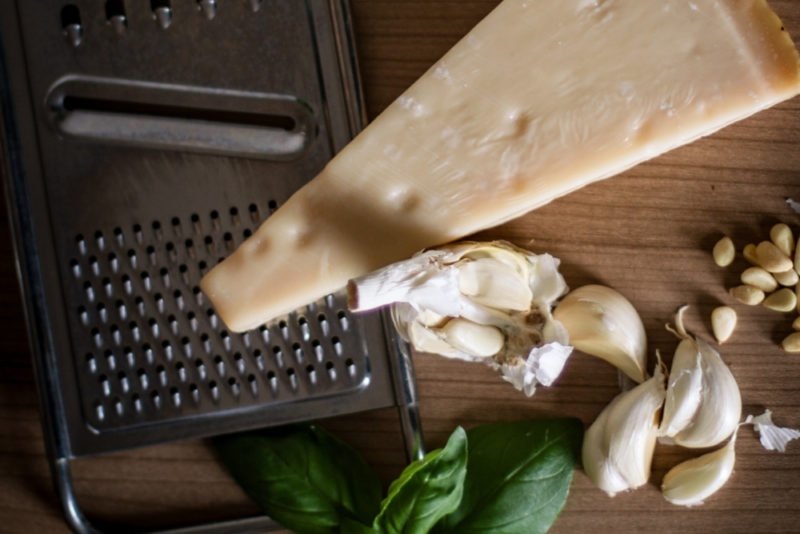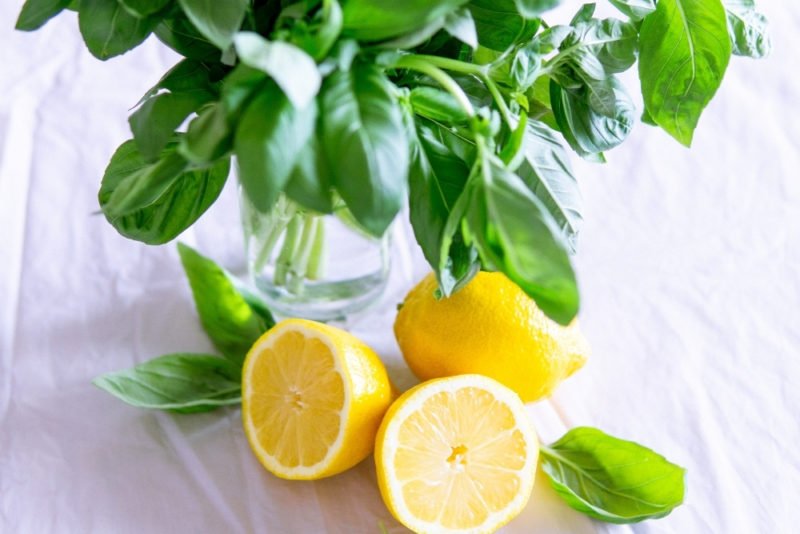
If you’re like most people, you’re limiting trips to the grocery store—even if you’re someone who likes going to the grocery store. Odds re you’re also limiting the time you spend in the store, sticking to replenishing tried-and-true staple items, the essential backbones of your meals and snacks. If that’s starting to feel a little lackluster, here are some ways to liven up some of your pantry essentials without needing to shop more often.
Kick start the quality
1. Out with spray oil, in with oil in a bottle. Oil in a aerosol can is not only about twice as expensive—when looking at volume—as any decent oil in a bottle, but spray oil isn’t even decent oil. It’s low-quality, and has additives to facilitate being sprayed in an aerosol mist. Just get some good quality extra-virgin olive oil (or canola or avocado oil) and spread it in the pan with a brush or your fingers. I would recommend a hand-pumped sprayer, but my experiences of them have been middling, largely because they are hard to clean and the residue can smell rancid after a while. Not good!
2. Out with bottled salad dressings and marinades, in with your own concoctions. Pre-made dressings and marinades are far more expensive than those you can quickly make at home. Once you start DIYing it, you’ll never go back. For both marinades and vinaigrettes, start with a ratio of 3 parts oil to 1 part acid (vinegar or lemon juice). From there, you can customize to your heart’s content. Tweak the proportions of oil-to-acid, add a bit of balsamic vinegar or Dijon mustard, maybe some fresh herbs, chopped shallot or minced garlic.
3. Out with “Parmesan” in a green can, in with Parmesan you grate yourself. You know what I’m talking about…I don’t even name the brand. That stuff isn’t even real Parmesan, which explains while there’s a world of difference between those tiny flakes and what you get when you take a grater to a real hunk of Parmesan-Reggiano. I grew up with the green can, and even had it in my young adult household for a time, but once you get the real thing, you’ll never go back. I buy mine from Costco, and even though it takes our two-person household a while to go through it, it keeps well in the fridge for months and months. Parmesan adds a salty umami flavor to more than just your favorite Italian pasta dish—it elevates egg dishes, roasted vegetables and salads. I like to use the vegetable peeler to shave it over arugula salads, and it’s essential to making risotto. And don’t toss the rinds—they add a major flavor hit to pots of soup and tomato-based stews and sauces.

Say no to pale imitators
4. Ditch spices that no longer smell in favor of those that do. No, you don’t have to ditch your spices every six months, but you should toss them after a year. Some savvy cooks like to just clean out their entire spice cabinet once a year and be done with it.
5. Understand that not all dried herbs are worthy. If you have dried basil in your spice cabinet, toss it. Dried basil—and dried parsley—are mere shells of their formerly fresh selves. Fresh parsley is full of aroma and flavor, and it keeps for at least a week in the fridge. When basil’s not in season—or otherwise not available—it’s best to go without. I add fresh basil to my tomato-based pasta sauces in the summer, but lean on oregano (fresh or dried) in the winter. Yes, dried. Many herbs, including oregano, rosemary, tarragon and dill, are just fine in their dried forms. That’s good news, because while a rosemary plant may overwinter in many areas of the country, tarragon and dill don’t fair so well in most winter gardens.
6. Take an acid trip (but not in the way you think). Do you currently use bottled lemon juice? Try whole lemons instead. Bottled lemon juice is bitter and bland compared to fresh squeezed. Sorry, it has to be said. Fresh lemons keep well in the fridge, so you can keep a supply on hand and just top it off when you do go to the store. Plus, with fresh lemons you can make lemon zest, if you get yourself a handy microplane-style grater. Not enamored with inexpensive balsamic vinegar but the good stuff doesn’t fit in your food budget? Try sherry vinegar. It’s flavorful and not overly sweet, which is something only the expensive balsamic vinegars can claim.

Elevate the flavor
7. Use dried beans when you can. There is zero shame in using canned beans, I just want to be clear, but when you can, dried bean will save you money and space while giving you better flavor.
8. Dried fruit is for more than just oatmeal and trail mix. Now that we’re moving into fall, dried fruit is fabulous with braised meats (think dried plums with pork or beef, dried apricots with chicken) or soaked in water (or, ahem, alcohol) as a topping for ice cream, or even as a dessert in its own right.
9. Capers and good olives are flavor workhorses. The salty, briny kick of capers and good olives (i.e., not the black olives that come in a can and you probably stuck on the ends of your fingers as a kid) can jazz up everything from meat-based pasta sauces to tuna salad to grain-based salads. One of my favorite easy lunches is a can of olive oil-packed tuna with a can of drained and rinsed white beans and a few tablespoons of capers or quartered Kalamata olives. Chopped Kalamatas can jazz up storebought hummus, and capers and Kalamatas ar the primary ingredients in the tapenade, which is fabulous on slices of toasted baguette or French bread, as well as a topping for baked or grilled chicken breast.
10. Put nuts through their paces. Not just for snacking and adding to quick breads, nuts add serious crunch, flavor and texture (plus healthy fats) to green salads and grain salads. One of my favorite easy side dishes is to cook some grains in vegetable or chicken broth, then stir in toasted, chopped walnuts or almonds plus a generous portion of chopped, fresh Italian (flat-leaf) parsley.
This post contains Amazon Affiliate links. As an Amazon Associate I earn from qualifying purchases.
Carrie Dennett, MPH, RDN, is a Pacific Northwest-based registered dietitian nutritionist, journalist, intuitive eating counselor, author, and speaker. Her superpowers include busting nutrition myths and empowering women and men to feel better in their bodies and make food choices that support pleasure, nutrition and health. This post is for informational purposes only and does not constitute individualized nutrition or medical advice.
Seeking 1-on-1 nutrition counseling? Learn more about her Food & Body, IBS management, and nutrition counseling programs, and book an intro call to see if the program is a good fit, and if we’re a good fit!
Want exclusive content on nutrition, health, diet culture and more, plus critiques of nutrition and health journalism? Subscribe to my Food Noise newsletter! 📣






